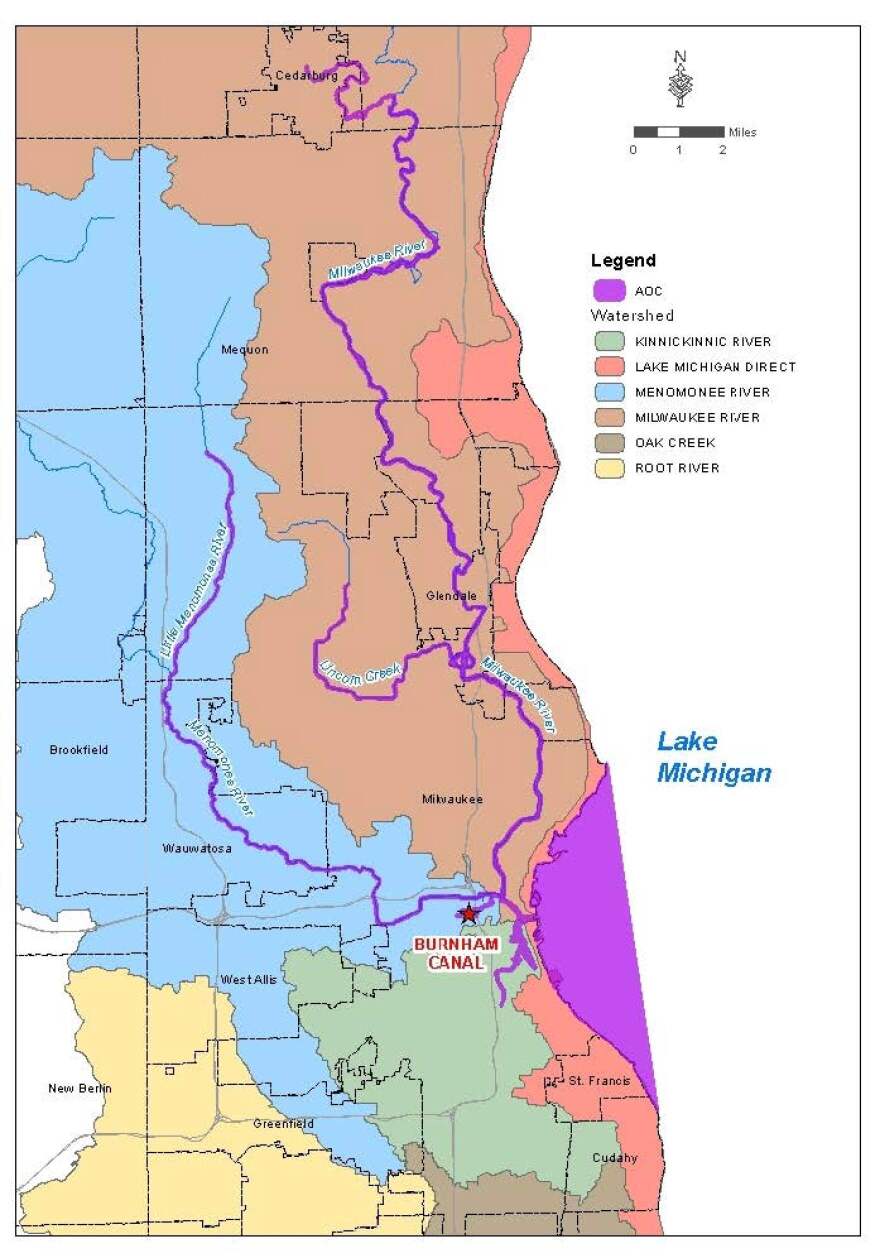Milwaukee’s lakefront is unique. Wisconsin is also unique in that our right to access our waterways is folded into the state’s constitution.
Wednesday UW-Milwaukee’s Center for Water Policy is hosting an event in hopes of educating the public about Milwaukee’s Fresh Coast and the public’s rights to access it.
“Most people call this area flyover country. They’re focused on the ocean coasts,” Melissa Scanlan says. She’s a professor at UWM’s School of Freshwater Science and director of the Center for Water Policy.
“What we’re trying to do is raise awareness about protecting that Fresh Coast and making sure it’s a draw, not only for the people who live here, but for tourists to come to this area and enjoy it,” Scanlan explains.
Milwaukee’s lakefront is unique, not only in its beauty, but because much of it is actually filled lakebed. As part of the webinar, local historian John Gurda will explain its creation and evolution.
Sarah Martinez will also be sharing what’s she’s learned about Milwaukee’s Fresh Coast. The recent University of Utah law school graduate has joined UWM’s Center for Water Policy as a water quality specialist.
“In all cases of lakebed fill there’s sort of two layers to it. There’s the lakebed grant which specifies the purposes for which that lakebed will be use; for instance the ones given to the city to make Lincoln Memorial Drive and Bradford Beach were given for those purposes and then another layer on top of that is the Public Trust Doctrine,” Martinez says.
The doctrine is grounded in Wisconsin’s constitution.
“So the lakebed grants serve as one layer and then the Public Trust Doctrine which on top of that has to promote Wisconsinites rights to water, because the state serves as trustee,” Martinez adds. “This includes rights to navigation, recreation, water quality, enjoyment of scenic beauty; as long as it satisfies a couple of these things, it will satisfy for Public Trust Doctrine.”
Residents now have the opportunity to weigh in on what one day could become another public space along Milwaukee’s Fresh Coast, thanks to a years’ long clean up of the Milwaukee estuary.

It covers roughly 10 miles on the Menomonee, Kinnickinnic and the Milwaukee Rivers, along with parts of Milwaukee’s inner and outer harbor.
“It’s an EPA-designated area where there’s been legacy contamination,” Martinez explains. “And over the next couple of years the Army Corps and number of other stakeholders including Wisconsin DNR and MMSD will be partnering to dredge all of that material and then they have to put it somewhere, right?”
Melissa Scanlan says the spot being proposed is just north of the Lake Express ferry station.
“There is currently lakebed landfill that is there that the Corps of Engineers has been filling with dredged materials, navigational dredging and it will go directly north of that, if it approved,” she explains.

Scanlan says it’s one of the topics that will be explored at the Wednesday event.
“What could the future land use be on this newly-created land, how public should it be, what’s the role of the public in deciding what that new landuse should be and when should it be decided,” Scanlan says.
She says the decisions made a century ago by municipal leaders to turn lakebed area into public parks created a greenway.
She hopes cultivating broad community discussion about the estuary cleanup will encourage today’s leaders “to make well-informed decisions that are really protecting the public interest going, not just for today, but for 50 years from today, 100 years from now, 200 years from now,” Scanlan says.
Have an environmental question you'd like WUWM's Susan Bence to investigate? Submit below. (If the module isn't appearing, please refresh the page.)
_






